 |
 |
 |
| |
Merck HCV Protease & Polymerase Inhibitor Viral Load Reduction & Resistance in Chimps
|
| |
| |
Reported by Jules Levin
EASL, April 11-15, 2007
Barcelona, Spain
This was the first time at a conference that Merck reported data on their HCV protease inhibitor. It appears from the graph below the PI reduced HCV viral load in the chimpanzee by 5 logs. Merck has previously reported viral load reduction and resistance data on their HCV polymerase inhibitor. In the experiment in the chimpanzee displayed in this poster the HCV polymerase inhibitor reduced viral load by almost 6 logs.
"HCV Antiviral Activity and Resistance Analysis in Chronically infected Chimpanzees treated with NS3/4A Protease and NS5B Polymerase Inhibitors"
DB Olsen, SS Carroll, L Handt, S Ludmerer, d Graham, C Fandozzi, L DeLuca, N Liverton, J Vacca, D Hazuda
Antiviral Research Dept, Lab Animal Resources, Drug Metabolism, Safety Assessment, Medicinal Chemistry, Merck research Labs, West Point, PA
Author Conclusions
The chimpanzee model of chronic HCV infection has provided crucial data to guide the clinical investigation of direct antiviral agents.
Robust efficacy was achieved with protease and polymerase inhibitors.
-- viral load below LOD for >35d required for SVR
AUGER data suggests Nucleoside inhibitors offer advantages in terms of
--persistence of resistance mutations
NI æ short liver (days)
PI æ long lived (months)
The data support further investigation of all oral combination therapy consisting of direct antiviral agents to cure chronic HCV infection.
ABSTRACT
Background: Current standard of care treatment for chronic hepatitis C virus infectiob is combinationb therapy with pegylated interferon-a and ribavirin, a regimen of limited efficacy and tolerability. Efforts to improve treatment include the development of direct antiviral agents targeting the virally encoded RNA polymerase, NS5B, and protease, NS3/4A enzymes. We have validated the in vivo efficacy of inhibitors for both targets in HCV-infected chimpanzees and characterized resistance with a novel, robust resistance assay.
Methods: Per protocol, two chronically infected chimpanzees were dosed by single, daily administration of inhibitors of NS5B (7d IV @ 2mpk or 37d orally @ 2mpk) or NS3/4A (7d @ 5 mpk BID). Plasma vload was quanitified using the Taqman assay (Roche, LOQ=20 IU/mL). Resistance was analyzed with sequencing of RT-PCR products and with an Allele-specific Ultrasensitive Genotyping assay fir Enzyme Resistance (AUGER: LOD about 1 in 10,000 copies).
RESULTS
Administration of either NS5B or NS3/4a inhibitor resulted in rapid vload suppression to below the limit of quantification (BLQ). Viral load rebounded postdose, but remained BLQ for several weeks following 37d dosing of the NS5B inhibitor. After NS3 PI treatment, rebound viral populations were enhanced for resistant virus, but there was no evidence for antiviral failure during dosing. Careful analysis showed a small population (<0.1%) of this resistant virus in pretreatment samples. WT virus eventually replaced resistant virus in absence of further dosing, but the time course for reversion differed significantly between the two inhibitors. Virus resistant to the polymerase inhibitor (S282T) disappeared from circulating populations within days following the end of treatment, suggesting debilitated replication. Virus resistant to the protease inhibitor (R155K) diminished gradually and persisted as a minor species for several months.
BACKGROUND
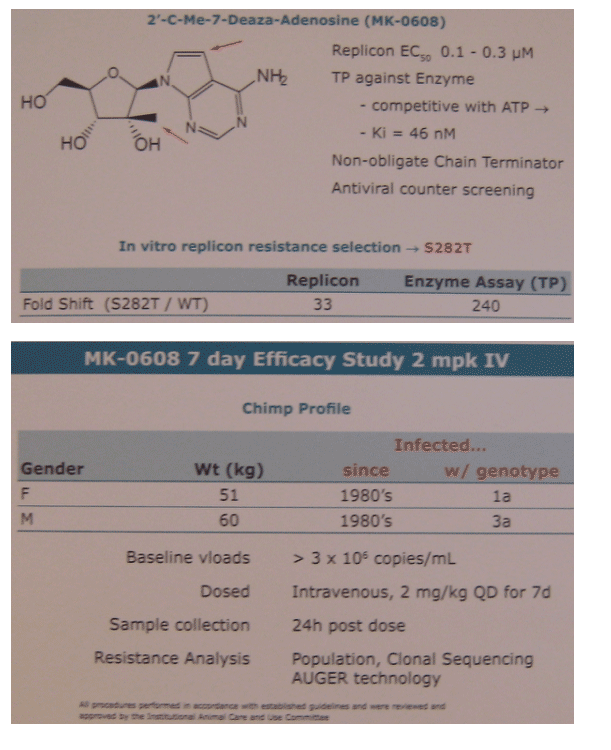
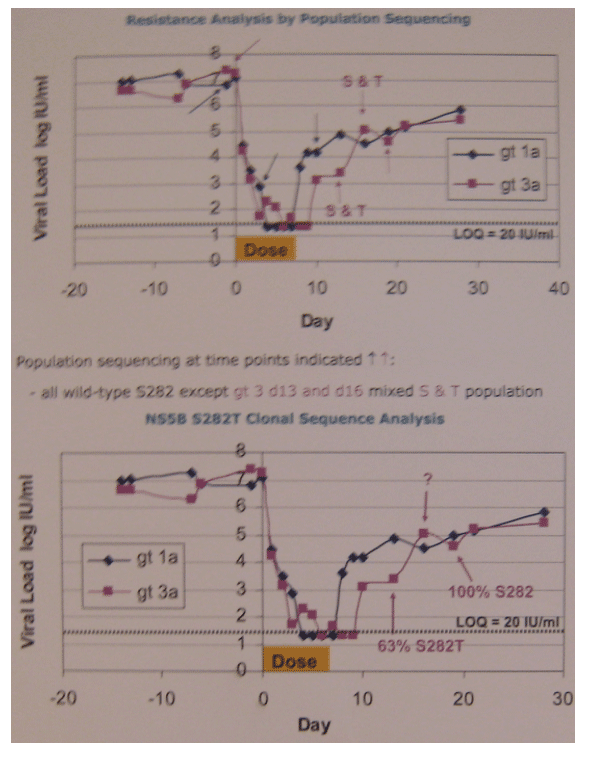
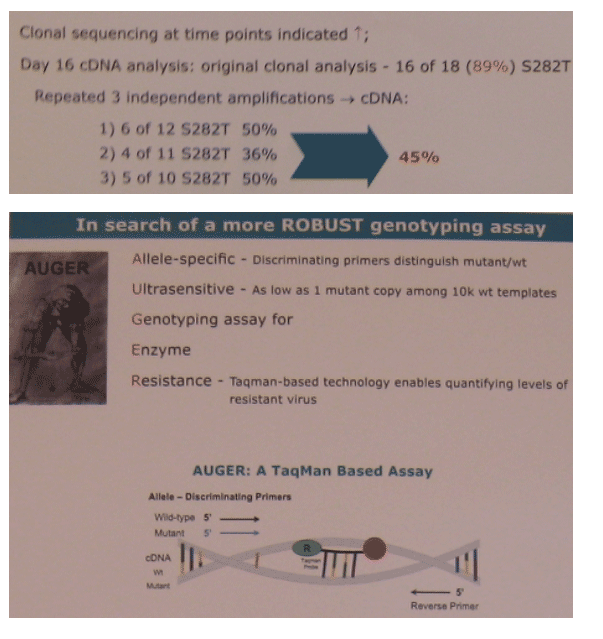
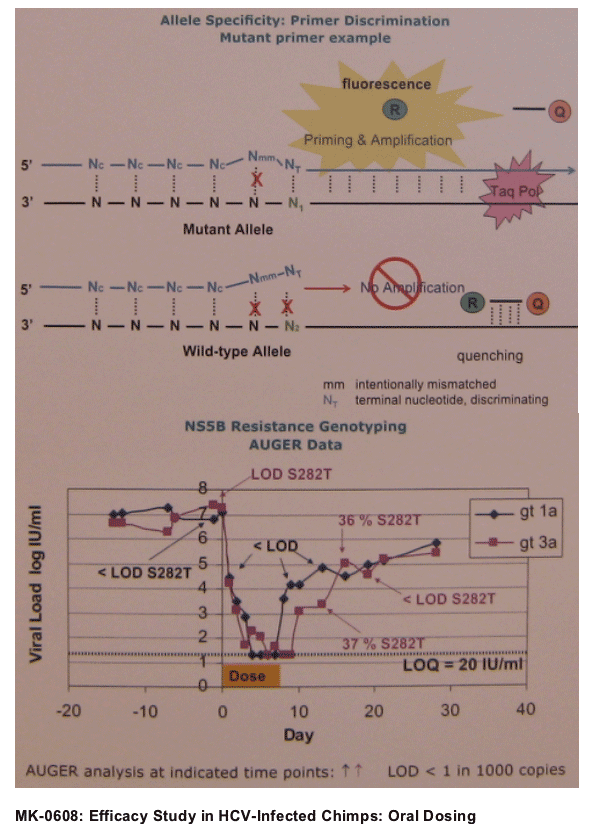
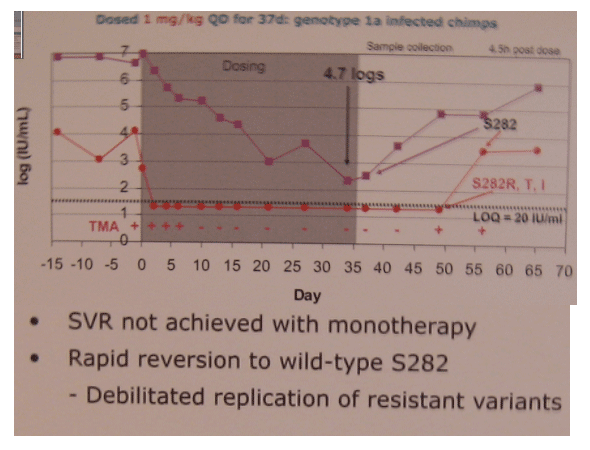
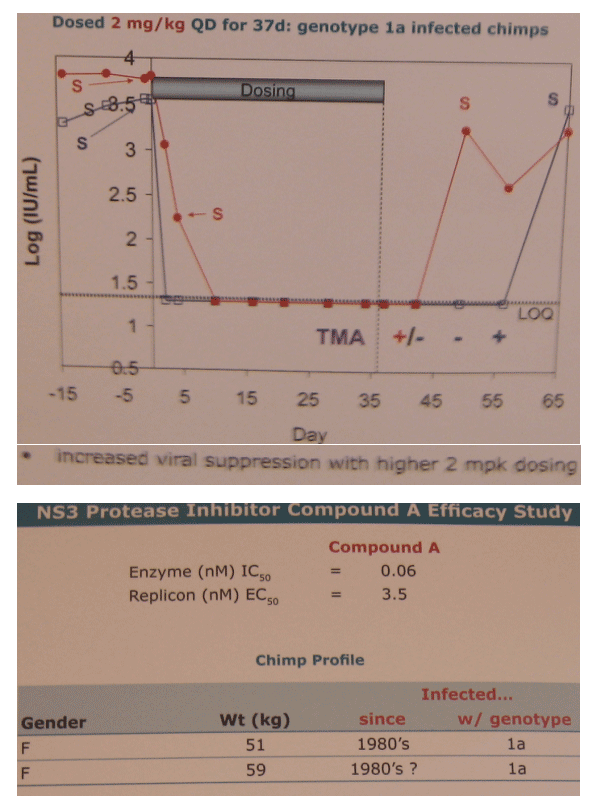
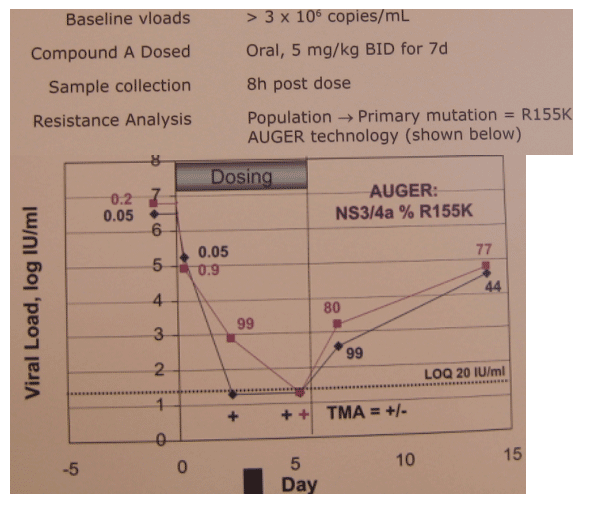
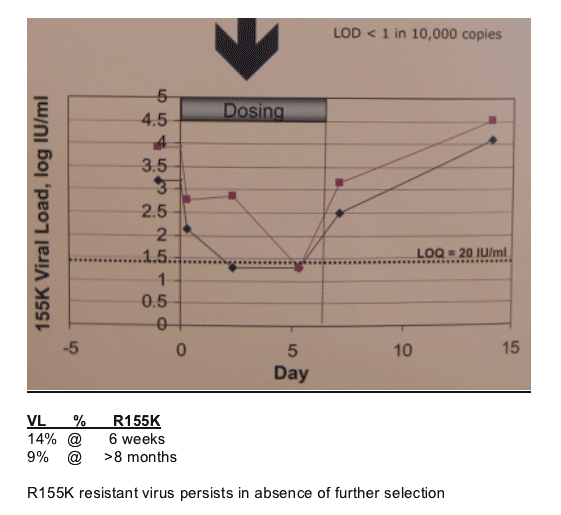
|
| |
|
 |
 |
|
|